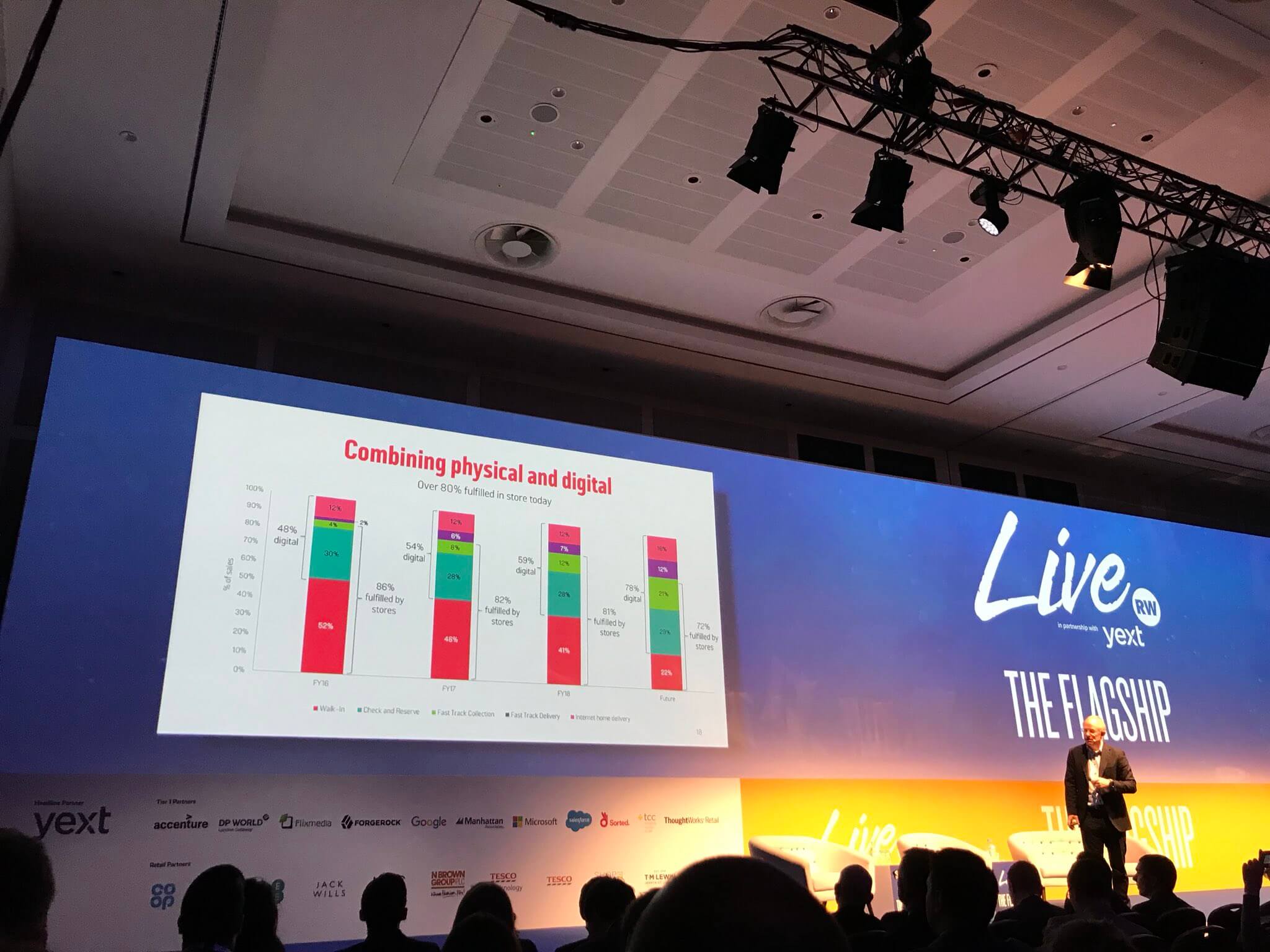Today, I was fortunate enough to be invited to Retail Week Live, taking place at the o2 in London. I’ll be writing up a more detailed post about the event specifically, but I must say I’ve been enormously impressed by the speakers, the content and the venue so far!
John Rogers delivered the second presentation of the day and I found it so insightful that I decided to write a post specifically about his talk / presentation. One of the main takeaways for me was that, whilst 60% of Argos’ orders originate via online, nearly 80% are fulfilled via their stores. This is a really good example of how Argos have managed to leverage physical retail stores to achieve multi-channel growth and also the strength of their logistics and distribution setup.

John started off talking about the future of in-store retail, following the change we’ve seen over the last 5 years in this area. John initially focused on the need to think about how multi-channel brands can combine in-store with digital to deliver a competitive advantage, which Argos has very much achieved. John mentioned that Argos very much consider themselves a “tech-driven business”, as they’re hugely focused on retail technology and adopting new technologies and innovation.
Argos is the third most-visited retail website in the UK, after Amazon(most visited site in the UK) and eBay (coming in second). Argos are also the first retailer to do £1bn in online sales and they get more than 1.2bn visits to their website per year.
John also talked about how important emerging technologies are to Argos and mentioned that they’re investing heavily in artificial intelligence and machine learning across their website and in-store.
Argos are a success story amongst many contrasting stories, but they responded to a need to change as a business, as the consumer changed their habits and the market shifted online considerably. John also talked of a very clear distinction between retailers who have nailed the online proposition and those that haven’t. The general merchandise and clothing sectorshaves moved online faster than food, but the group (Home Retail Group, who own both Argos and Sainsbury’s) are now doing 20% of their sales online.
Lots of people questioned Sainsbury’s for acquiring Argos, a retailer directly competing with Amazon, however, Argos continue to grow via improving the omni-channel experience they offer to customers.
Argos is also a great example of a retailer who use retail space very effectively. Usage of click and collect continues to grow rapidly and is an example of how these multi-channel retailers can provide a better experience. Delivery options is a real USP for Argos and it has been a big area for investment – they can now deliver to 90% of the UK in under 4 hours. Usage of their fast-track delivery option is up 30% year on year and is a good example of how they’ve made things more convenient for the customer. A good proportion of Argos’s growth is driven by this added convenience. Sainsbury’s will also continue to help this, by providing more locations for in-store pickups, amongst other things.
As part of their strategy around multi-channel growth, the group have focused on utilising excess space between Sainsbury’s and Argos – Argos storefronts can now be found in 191 Sainsbury’s stores and there are 192 collection points in Sainsbury’s stores, as well as digital touch points.
Working their delivery options and distribution networks harder has also helped Argos to reduce their carbon footprint, due to reduced wastage and improved efficiency across delivery and movement of stock. The more efficient delivery options also prevent the customer from travelling to stores to pick up goods.
Argos have an average stock-holding density of just 1-2 per SKU in their retail locations, which helps them to use retail space effectively. Their distribution network is able to move goods fast, allowing them to sustain these levels of stock.
One Response
great article with explaining retail industry future with detail data. thanks paul.